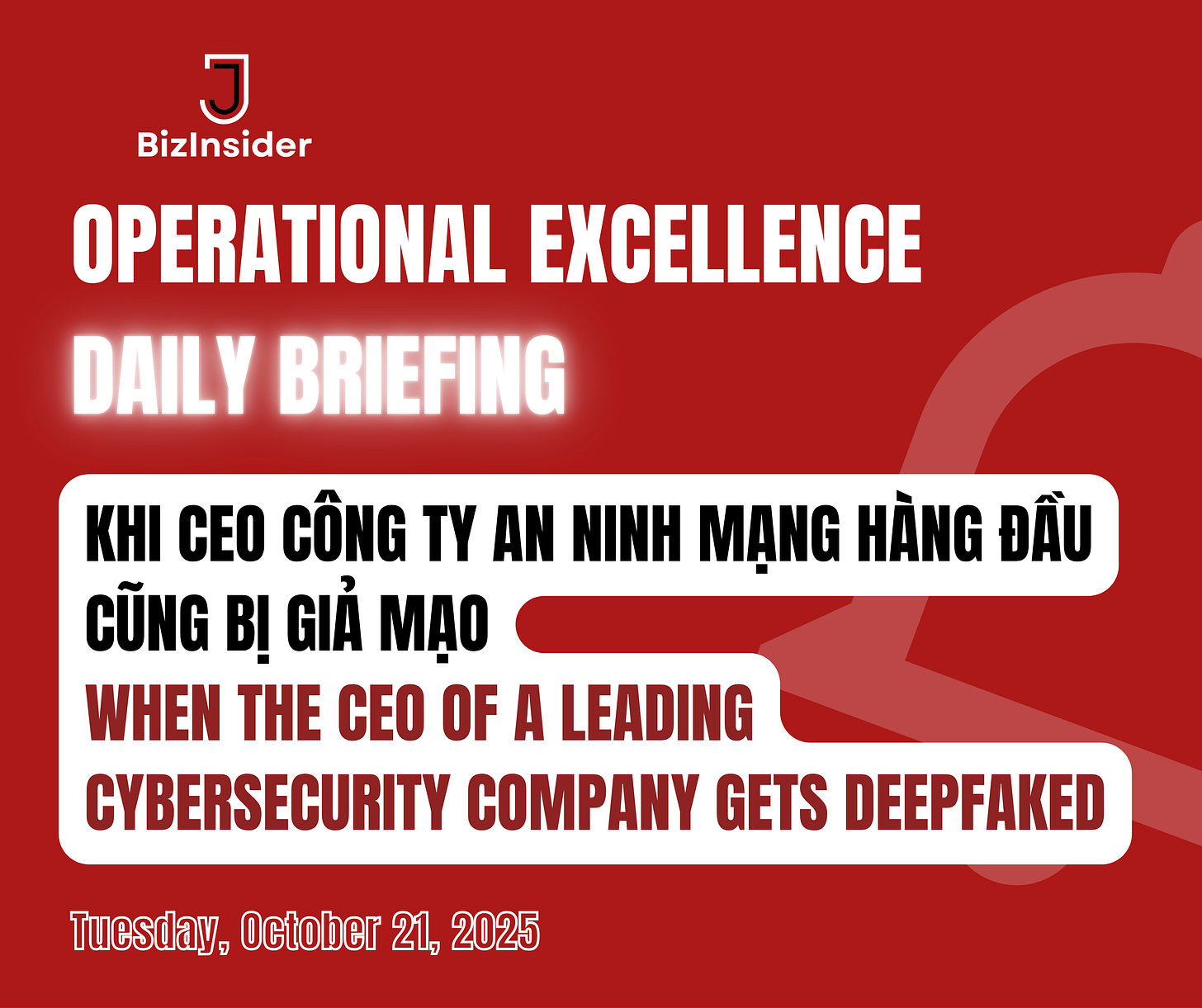Operational Excellence (OPEX) Daily Briefing – Tuesday, October 21, 2025: When the CEO of a Leading Cybersecurity Company Gets Deepfaked: OPEX Lessons from the Darktrace Incident.
Điểm Tin Operational Excellence (OPEX) Mỗi Ngày – Thứ Ba, Ngày 21/10/2025: Khi CEO Công Ty An Ninh Mạng Hàng Đầu Cũng Bị Giả Mạo: Bài Học OPEX Từ Sự Cố Deepfake Darktrace.
Welcome to my unique weekday article for the paid subscriber-only edition.
Operational Excellence (OPEX) Daily Briefing – issued on weekdays (Monday to Friday).
Điểm tin Operational Excellence (OPEX) hằng ngày (phát hành các ngày thứ Hai đến thứ Sáu).
This is the bilingual post in English and Vietnamese. Vietnamese is below.
Đây là bài viết song ngữ Anh-Việt. Tiếng Việt ở bên dưới.
English
Part 1: Official Statement – When Even a CEO Becomes a Victim of Deepfake
On October 21, 2025, according to international media outlets such as BBC, Reuters, and The Guardian, Poppy Gustafsson, CEO of Darktrace—one of the world’s leading cybersecurity companies—revealed at the European Technology Conference that she had once been the target of a sophisticated deepfake scam.
During her talk, she explained that the incident occurred when an individual impersonated a strategic partner of the company in a video conference. Artificial intelligence was used to mimic the real person’s voice, facial expressions, and gestures with stunning accuracy, making it nearly impossible for the executive team to distinguish reality from forgery.
Thanks to Darktrace’s internal verification protocols, the deception was detected and blocked in time. However, the event sounded a global alarm about the growing threat of deepfakes in today’s digital business environment.
According to BBC Technology (October 21, 2025), this was not an isolated case. Incidents involving fake executives are rising sharply worldwide—ranging from deepfake videos requesting money transfers to fake virtual meetings impersonating CEOs to steal data or funds.
The Europol Cybercrime Center reported that in just the first nine months of 2025, financial losses from deepfake-related scams exceeded USD 1.3 billion, representing a 60% year-over-year increase.
Cybersecurity experts emphasize that AI is no longer just a defensive tool—it has become a potential weapon for attackers. As businesses grow increasingly dependent on virtual communication and cloud-based systems, any weakness in identity verification can become an open door for cybercriminals.
A Forrester Research analyst commented:
“It’s ironic that even pioneers in cybersecurity can become victims themselves. This proves that no organization is entirely safe—only those that prepare and respond quickly enough.”
From the Darktrace incident, corporate leaders are beginning to recognize that deepfake threats are no longer confined to IT departments, but have evolved into a core component of operational risk.
When human images, voices, and data can all be replicated by AI, the challenge of “security” extends far beyond firewalls—it demands the creation of robust verification systems and a culture of vigilance across the entire organization.
This event raises a critical question for every enterprise in the digital age:
If even a leading cybersecurity company can be impersonated, who can truly claim to be immune?



